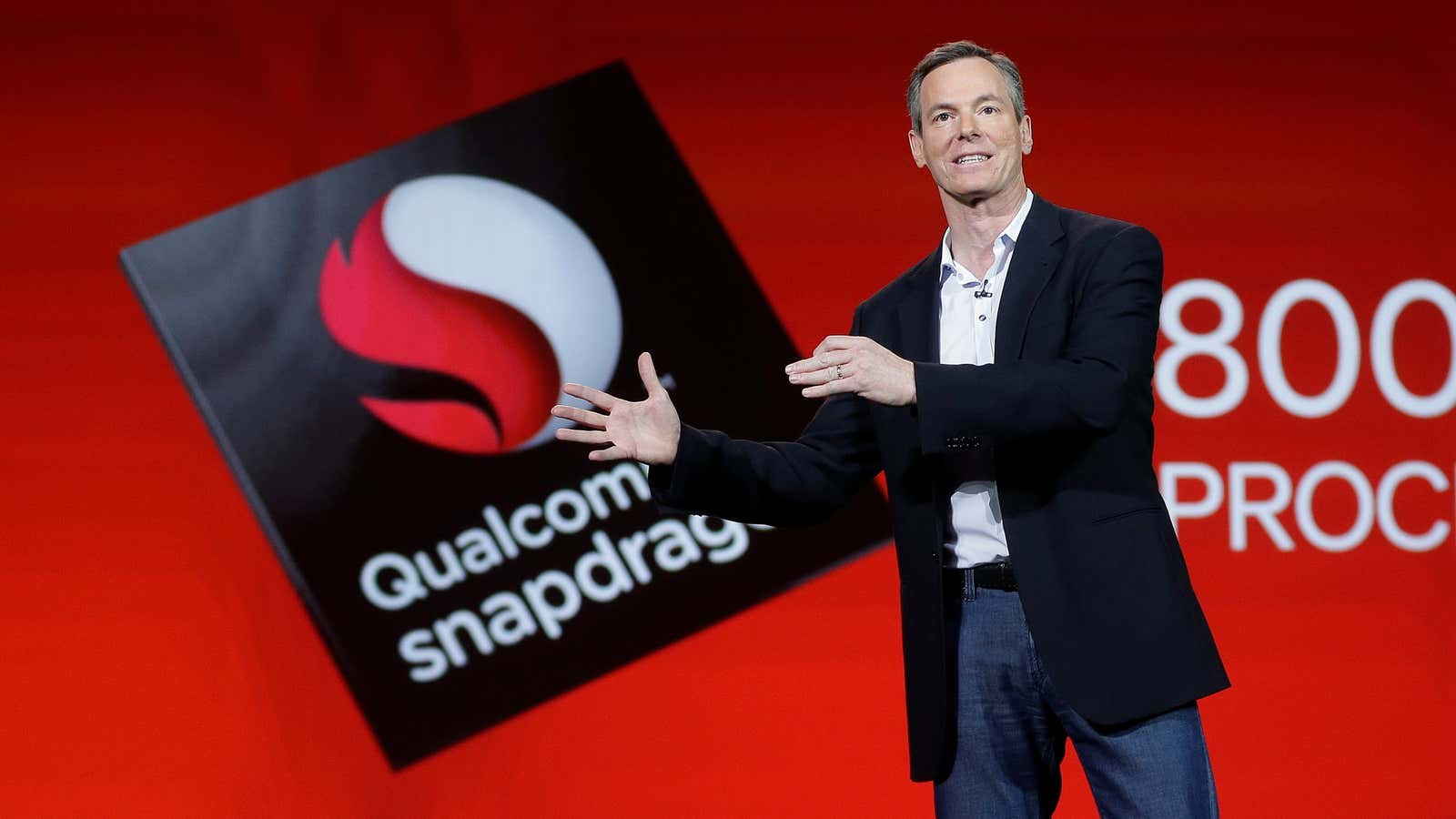For $90 million, Intel just acquired the whole of ST-Ericsson’s unit responsible for creating microchips that allow navigation via GPS satellites. It’s the first acquisition for Intel’s new CEO, Brian Krzanich, who has only been on the job for 12 days.
The unit Krzanich just bought for a song has been a huge money-loser for ST-Ericsson, so this move isn’t about bolstering Intel’s flagging revenue. Rather, it’s about giving Intel a stronger foothold in the mobile phone market. Intel makes chips for phones, a line it calls Silvermont, and they’re getting better, but only a handful of manufacturers use them. And that’s at least partly because Intel doesn’t yet create the kinds of all-in-one mobile chips that are currently the sole domain of companies like mobile chip giant Qualcomm. (Intel hasn’t yet responded to requests for comment.)
All-in-one mobile chips that can do everything—compute pretty graphics, talk to cell phone towers, process GPS signals—are key to keeping power consumption in phones low (important for getting the most bang out of a limited battery) and for selling chips at the lowest cost, so that phone makers want to incorporate them into their latest handsets.
Intel also has a habit of using its connections with computer makers to hand them “reference designs” that let the manfacturers make PCs under their own brand name with Intel guts—the most famous one, currently, being Intel’s vision for the “ultrabook,” which is basically a MacBook Air but with anyone’s branding but Apple’s.
Now, if Intel can attach enough of the other pieces of a mobile phone chip to its own ever-more-powerful Silvermont chips, the company can create its own reference designs for mobile. That’s just like Qualcomm, which will basically ship the entire guts of a smartphone, minus the screen and a few other elements, to any manufacturer who wants to slap them into a case.
This has been a huge success story for Qualcomm, according to the company: Though its reference design program was launched only in 2011, it’s already led to 170 different phones from 40 manufacturers, mostly in China, and shortens the time between the conception of a phone to its manufacture from one and a half years to 60 days.
That’s one reason Qualcomm is so dominant in mobile chips. And it’s clear that Intel has woken up to the fact that in a mobile future, one way it can turbocharge its own efforts to gain market share is by offering something similar.
